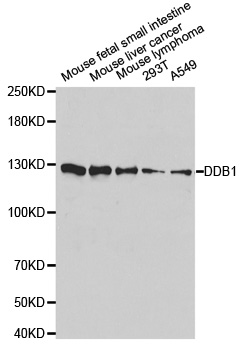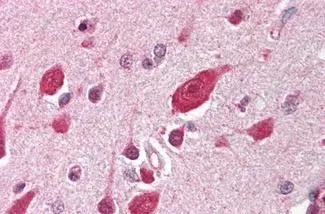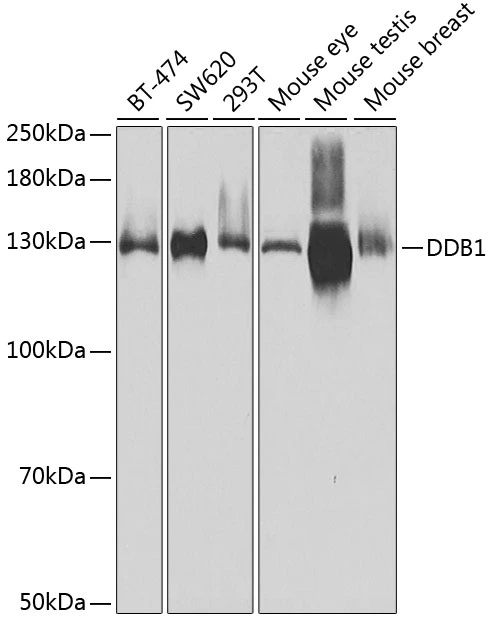DDB1 antibody [1322]
GTX70302
ApplicationsWestern Blot, ELISA
Product group Antibodies
ReactivityHuman
TargetDDB1
Overview
- SupplierGeneTex
- Product NameDDB1 antibody [1322]
- Delivery Days Customer9
- Application Supplier NoteFor ELISA: Use at an assay dependent dilution. For WB(ECL): Use at a dilution of 1:1,000 in 5% Milk/PBS containing 0.05% Tween. We recommend an overnight incubation at 4C. Secondary antibody (GTX30590) 2 hours at RT with dilution of 1:5,000 in 5% Milk/PBS containing 0.05% Tween. Not tested in other applictions. Optiamal dilutions/concentrations should be determined by the researcher.
- ApplicationsWestern Blot, ELISA
- CertificationResearch Use Only
- ClonalityMonoclonal
- Clone ID1322
- Concentration3 mg/ml
- ConjugateUnconjugated
- Gene ID1642
- Target nameDDB1
- Target descriptiondamage specific DNA binding protein 1
- Target synonymsDDBA, UV-DDB1, WHIKERS, XAP1, XPCE, XPE, XPE-BF, DNA damage-binding protein 1, DDB p127 subunit, DNA damage-binding protein a, HBV X-associated protein 1, UV-DDB 1, UV-damaged DNA-binding factor, UV-damaged DNA-binding protein 1, XAP-1, XPE-binding factor, damage-specific DNA binding protein 1, 127kDa, xeroderma pigmentosum group E-complementing protein
- HostMouse
- IsotypeIgG1
- Protein IDQ16531
- Protein NameDNA damage-binding protein 1
- Scientific DescriptionThe protein encoded by this gene is the large subunit (p127) of the heterodimeric DNA damage-binding (DDB) complex while another protein (p48) forms the small subunit. This protein complex functions in nucleotide-excision repair and binds to DNA following UV damage. Defective activity of this complex causes the repair defect in patients with xeroderma pigmentosum complementation group E (XPE) - an autosomal recessive disorder characterized by photosensitivity and early onset of carcinomas. However, it remains for mutation analysis to demonstrate whether the defect in XPE patients is in this gene or the gene encoding the small subunit. In addition, Best vitelliform mascular dystrophy is mapped to the same region as this gene on 11q, but no sequence alternations of this gene are demonstrated in Best disease patients. The protein encoded by this gene also functions as an adaptor molecule for the cullin 4 (CUL4) ubiquitin E3 ligase complex by facilitating the binding of substrates to this complex and the ubiquitination of proteins. [provided by RefSeq, May 2012]
- ReactivityHuman
- Storage Instruction-20°C or -80°C,2°C to 8°C
- UNSPSC12352203






